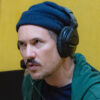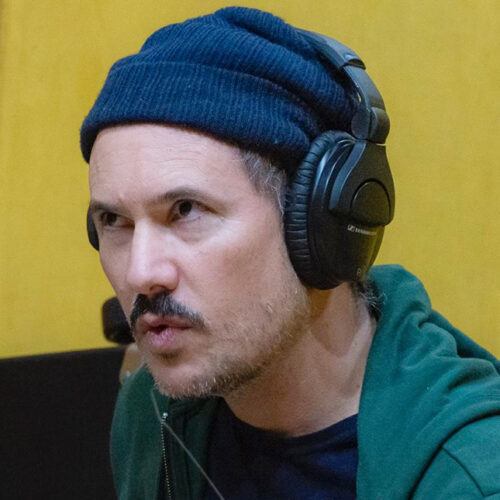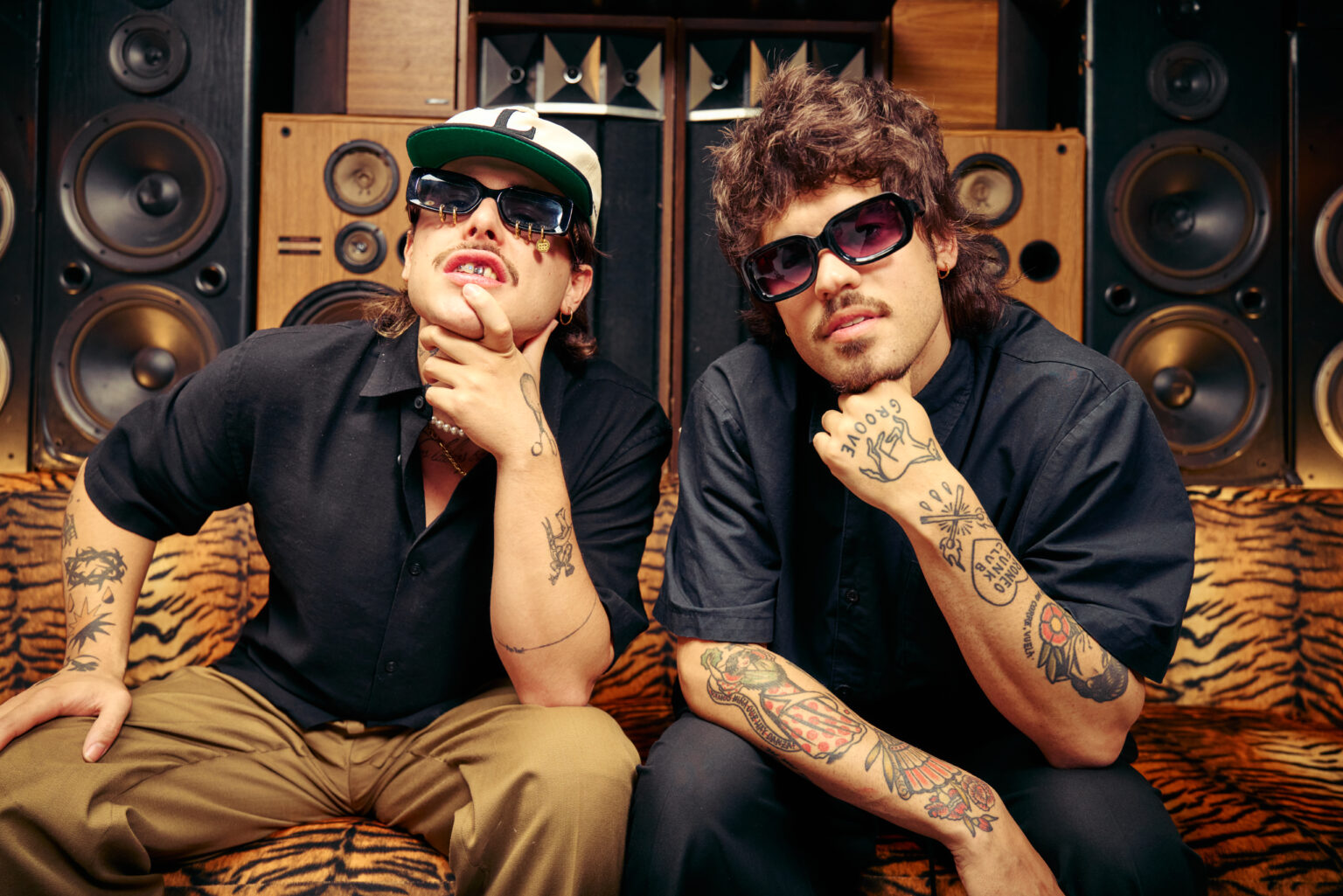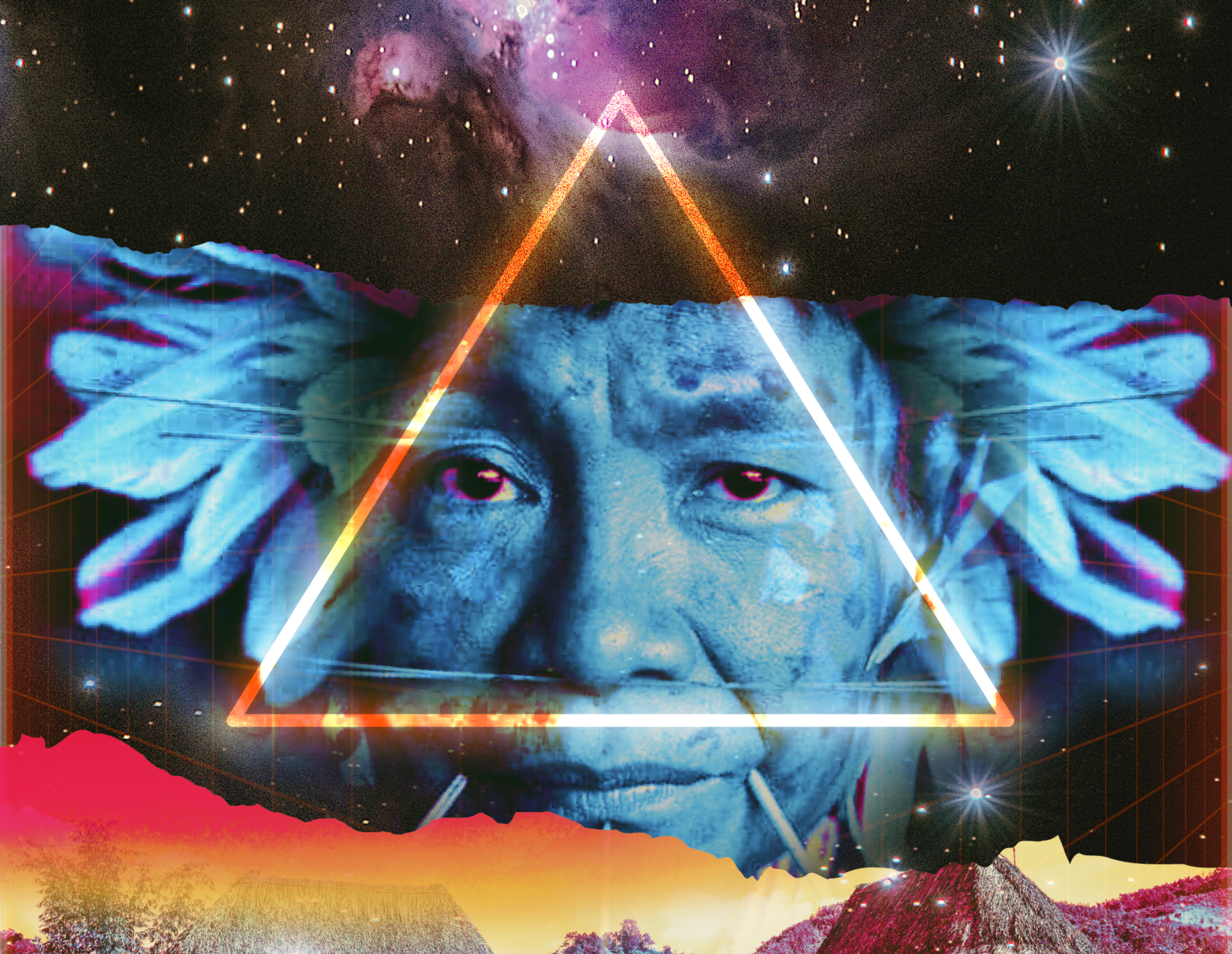Where are the experiences of human history kept? How can we reconnect with that shared and veiled feeling, with that intangible heritage that passes from generation to generation? The collective unconscious is usually lost in the daily tide, but it’s there, it’s always there, doing its magic to connect us with what surrounds us. In a world of increasingly fragmented social life, Nación Ekeko brings us an album that reminds us of a higher connection, a sort of energy that unites us beyond borders and screens. Gran Espíritu is that record proclaiming that “everything is vibrating inside your body.”
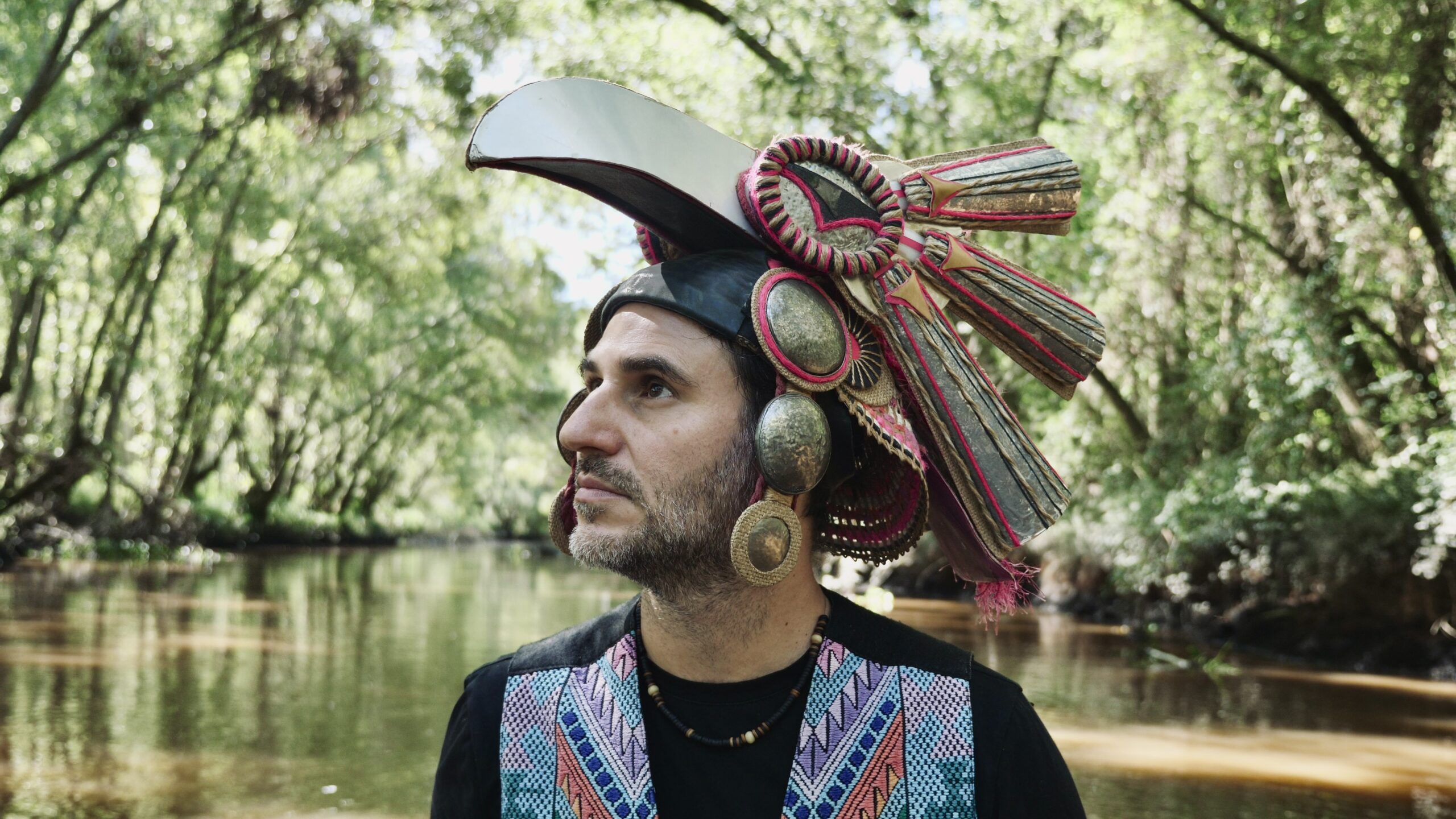
Originally from Resistencia, the capital of Chaco, one of the northern Argentine provinces, Diego Pérez is the name behind Nación Ekeko. Multi-instrumentalist and music producer, he has been carrying out this solo project since 2012, based on his concern for describing Latin American landscapes, rescuing the wise messages of Indigenous peoples, and expanding collaborations with different talents from the continent. Nación Ekeko unfolds a great sound journey that crosses the ancestral and native with the electronic and the global. Also, since 2005, Diego is half of Tonolec, a renowned duo shared with the Formosa singer Charo Bogarín that mixes folklore with electronic music.
In this interview, Diego Pérez addresses different topics and stories, from how he connected with the culture of the native peoples to how the sensory takes precedence in his approach to music. “Many times I feel more like a pictorial artist, a painter, than a musician, because I like those aspects of music: the timbre and texture of sounds, which would be like the color of the painting,” he explains. “This is why I feel my music is more like landscapes.” Of course, here Diego also reveals the keys to his new album Gran Espíritu, based on that redeeming concept of the collective, on the firm belief in a common heartbeat, in a breath of synchronicity. He says we’re all that “great spirit”: leaves, stones, rivers, air, living beings… We’re all the same body and territory. “I think the best thing you can share with another is your journey, your own process,” he points out. “And as a culture, our process is in history, in the roots. Our true wealth is there.”
Tigre Sounds: How did you become the multi-instrumentalist you are today? What led you to explore the types of soulful sounds connected to nature that you are known for?
NACIÓN EKEKO: I’ll try to summarize my story… I’ve loved music since I was very young: I’ve been playing piano since I was seven years old, and since then I started composing, thanks to my piano teacher who told me it was also good for me to create my own things. That encouraged me and helped me. Then, at eighteen, I started playing rock, forming bands with friends. Also at that age, I decided to go to Córdoba to study composition. I’m from the northeast, and Córdoba is another province located in the center of the country. I went to university to get a degree in musical composition, and right there, while studying, I started using the computer to be able to hear all the voices of what I composed. Since I had to compose for a string quartet, for a symphony orchestra, and I didn’t have all the musicians, I turned to the computer to be able to listen to the polyphonies. And so I discovered that the computer was an amazing tool, especially for working on the texture and timbre of sound.
Tigre Sounds: Around that time, you already had a duo with the singer Charo, a project before Tonolec more influenced by trip-hop and electronic pop…
NACIÓN EKEKO: Yes. And that’s when we won a worldwide MTV contest. The prize was to play in Spain with great artists and have Gustavo Santaolalla produce a song for us. We were going to play with Björk, a big deal, I couldn’t believe it… I was 22 and living in a small apartment with three friends when they called me from MTVLA. What we did with that duo was electronic music, like Portishead and Massive Attack, we liked that vibe. So we took this trip to Europe. And when we went to play there, I felt that — although what I was doing was good — I wasn’t telling anything about where I came from, the Chaco, an area of Argentina with a very present Indigenous culture. There are the Qom and Wichí communities. We’re also very close to the Guaraní culture, from Paraguay. Five minutes from my house there’s a community… However, as happens in many Latin American societies, we’re largely unaware of what happens in the communities. I clicked on that trip: that’s when I realized that I wasn’t telling anything about where I come from.
Tigre Sounds: How did you connect with these native sounds?
NACIÓN EKEKO: When I came back from that trip, I heard an Indigenous choir from my region, and it was like, “Wow, this is the sound of my landscape.” I’ve never related a sound so strongly to a landscape. The place where I grew up was represented by that sound, by the music of the Toba Chelalapí choir — which means “flock of thrushes.” That was like a key for me, there I said to myself: “I’m this too, I grew up here, I’m this landscape.” I began a personal journey that had more to do with an identity, and that was reflected in the music. It was like accepting all the parts that make me up, as a Chaco, Argentinian and Latin American, and especially the Afro-indigenous part — the most postponed by historical power in Latin America. So there I began to work in contact with the communities, going there and working with artists from there. Nearly 20 years have passed since then. I first did it with Tonolec. And then I did it with Nación Ekeko, intending to expand it to all of Latin America, not just the region. The idea was to create a sound that integrates all the parts that represent me as a Latin American: the Indigenous, the Afro, the European, the Arab, everything that came from other places and ended up being part of it. A sound that reflects the landscape above all. The Qom — the Toba of my region — say something that for me is an interesting paradigm shift: the mountain doesn’t belong to us, we belong to the mountain. I think we have to start understanding that we belong to the landscape.
Tigre Sounds: That’s why you became “the son of the Altiplano”…
NACIÓN EKEKO: Exactly. That’s pretty much the genesis of what I do. There you understand a little about the process of why I’ve been doing it.
Tigre Sounds: You play several instruments. Regarding this, you compare your work to painting, driven by a desire to expand your sound palette…
NACIÓN EKEKO: Well, I’m a bit of a victim of this taste of mine for painting with music. So to paint you need colors. And for me, the colors are somehow the instruments. Of course, later, when I travel and go on tour, I want to kill myself (laughs)… When I produce, I think about what instrument would be great for each part of the song. Maybe it’s a flute. Or a melodica. Or a synthesizer. Or a Venezuelan Cuatro. It doesn’t depend on whether I play each instrument well… Everything is just to get to that point and express the color I want to add to that landscape. I generally feel comfortable because I don’t do very complex things either. But more than anything, the important thing is how to paint that color, to achieve that texture that I feel is part of the landscape I want to express.
Tigre Sounds: Not only do you carry the instruments, but you also have a fascinating attire, including a plumed headpiece. How do you travel?
NACIÓN EKEKO: How do I travel? Tight (laughs). I no longer need to carry the headpiece in my hand. I’ve already used the three plumes, representing the animals of the three Andean levels. For Andean culture, there are three levels. So the sky is represented by the condor, the earth by the puma or the jaguar, and the inter-terrestrial by the snake, which is what I use now when I travel. We made the other two before. Now, with the snake, we went ahead and made it so that it could be disassembled and stored inside the suitcase. Before, when I had to travel, it was a problem to manage. But now I have everything with me: two suitcases and the Cuatro hanging. And I bring everything: the visuals, the costumes, the set, the instruments. It’s a fairly portable set that can be moved on a plane.
Tigre Sounds: Your lyrics aren’t romantic in a conventional way — you don’t sing about love or lack of love for someone. But rather you focus on love for oneself and the connection with nature…
NACIÓN EKEKO: I think that more than anything it’s something that the native peoples have been transmitting to me. Above all, this feeling that we are part of a whole, that it is not something imaginary but rather something empirical, that we all breathe. “We are all children of the same mother…” That’s another thing the Qom say, which I usually repeat in my live performances. It seems to me that we’ve been moving far away from those concepts, which are fundamental to being able to live in community.
Tigre Sounds: Your music incorporates sounds from different places. How do you blend these influences with modern electronics to create a cohesive sound?
NACIÓN EKEKO: It involves integrating everything we are, including current elements, into a sound. Although there’s the influence of the native peoples, who are from Latin America and provide ancestral knowledge, there are also modern tools. I find it very interesting to be able to integrate electronics, always thinking of it as a tool, right? I don’t like to see technology as an end — and I think that happened a lot in the last few decades. I don’t think that I’m going to do something better because I have more technology, but I do believe that it’s a tool that, used in pursuit of a concept, can help many things. Above all, I’m also interested in using these tools compositionally: it seems to me that they allow you to work on the grain of sound and texture in a super detailed way.
Tigre Sounds: “Legüero”, featuring Kevin Johansen, has a strong sense of rhythm and tradition. What’s the inspiration behind this song?
NACIÓN EKEKO: “Legüero” is inspired by the connection with the bass drum. The bombo legüero is very characteristic of Argentine folklore and widely used. It’s called “legüero” because it can be heard at great distances [Editor’s note: the legua is an itinerary measure, defined by the path that’s regularly walked in one hour]. I found this connection very interesting, taking the drum as an ancestral animal, made of wood and leather. It’s a bit like Atahualpa said: the guitar already knew about music because, having previously been a tree, it listened to the song of the bird. There’s also an analogy with the human body. Because instruments are like us: the more full we are of things, the less we sound, the less reverberation we have. If you put clothes inside a guitar, it becomes muffled and doesn’t sound. The cleanliness that is talked about so much sometimes has to do with acoustics. So the idea was also to relate this ancestral instrument — such as the bombo legüero, which was about communication between communities — with our body and how it can reverberate when it’s emptier and cleaner. That’s kind of the inspiration for the song.
Tigre Sounds: Your music videos often feature breathtaking natural landscapes. What role does the natural environment play in your music and visual storytelling?
NACIÓN EKEKO: For me, nature is the essence. In other words, I fully feel what I was telling you: we are children of the place where we were born, with the geography and climate that affects us. I’m from Chaco, it’s very hot, I’m slower, I have my rhythms. And that’s also in my music: I have my silences. I think the river also shaped me a lot. Everything that one lives and inhabits is what in some way shapes us as well. And for me, it’s important to be able to convey that also when I’m providing music, when I’m writing it. Also, I like very short texts, I don’t like long lyrics. Because I feel that it’s more forceful. I like it when there’s more room for symbols, when it’s not so specific. I like the native languages, the little I know of Guaraní, Quechua, Macuzumú… These are more poetic languages. They are not as descriptive and linear as Spanish or the languages that come from Latin. But they are more poetic. They are symbols that are combined with other symbols and generate meaning. It seems to me that this is much more open and has more edges. I like that combination of short texts and saying a lot through the landscape and instrumentation.
Tigre Sounds: What is your song assembly process like? How does a concept arise and develop?
NACIÓN EKEKO: There are several stages. There’s a stage where an idea is born, and that idea is the generator of everything. It can be a melody, a lyric, or even a concept, an idea. Like what I told you about the bombo legüero. If I like that idea, it can survive on my cell phone, for example, if I record it so I don’t forget it. That’s where I’m starting to work on this idea. In other words, I take it to the studio and start to see how it rhythmically coexists with some element. And with what colors. That’s where the picture begins to be painted.
Tigre Sounds: What is medicine music for you?
NACIÓN EKEKO: Actually, for me, music is medicine. I went to study music at university and I learned a lot of super cool, interesting tools. But when I went to visit the indigenous communities, I understood that music for them has a different meaning. It’s not about getting on stage to show your virtuosity and have people applaud. Music has another function, more social, let’s say. The musician is something like a public employee of the community. There’s no Mick Jagger, that concept of stardom. Because the musician works for the community, from accompanying a ritual to culturally educating children through music. There’s a function. And it is communal. That made a click for me, it changed the way I perceive and deliver music. I no longer feel that I go on stage because I have to show the virtues that people appreciate. It seems to me that it’s not my way. But rather I try to connect with the people, with the environment, with the energy. Something will be generated from what we all do. I play with electronic tools, but in a very open way, with loops. My thing is to add layers. I can also change the tempo and I can improvise with guest musicians. In other words, I try not to let electronic things stick to a structure. It’s more about being able to constantly change on the live set according to the energy I feel. So, medicine music for me is about uniting us in a vibration, about being able to feel that we are a whole, about connecting from there. Music can have many functions. But I don’t find much of a separation between whether music is medicine or not, between why it is and why it isn’t. I somewhat refuse to believe that medicine music is a style. Rather, it seems to me that medicine is an instrument that can be administered according to what one needs that day. One day you wake up and feel like you need a type of vibration. And then another day you feel like you need another vibration.
Tigre Sounds: It’s great not to segment by genre, especially when all this love for the land, for instruments, for animals and for communities comes from your songs…
NACIÓN EKEKO: What I’ve been understanding, in this entire process of medical music, is that it doesn’t matter if it is a blues or even a reggaeton: it happens because they pour love into it. If that love is expressed well, a beautiful connection happens. I related to medicine music, I have enjoyed it and integrated it into my life. And what I have understood in this whole beautiful process is how the artist not only shows his musical talent. In fact, on the new album, there’s a song by Charly García that I heard at an ayahuasca ceremony. It’s a song from the eighties, that comes from another context, that has nothing to do with it and that you don’t think of as medicine music. But if you listen to the lyrics it seems like grandma is talking to you. The song is called “Hablando a Tu Corazón.” And there’s a verse that says: “No matter the language or the words, nor the borders that separate our love. I want you to listen to me and open up. I’m speaking to your heart.” That’s medicine music.
Stream Nación Ekeko’s new album, Gran Espíritu, below:





